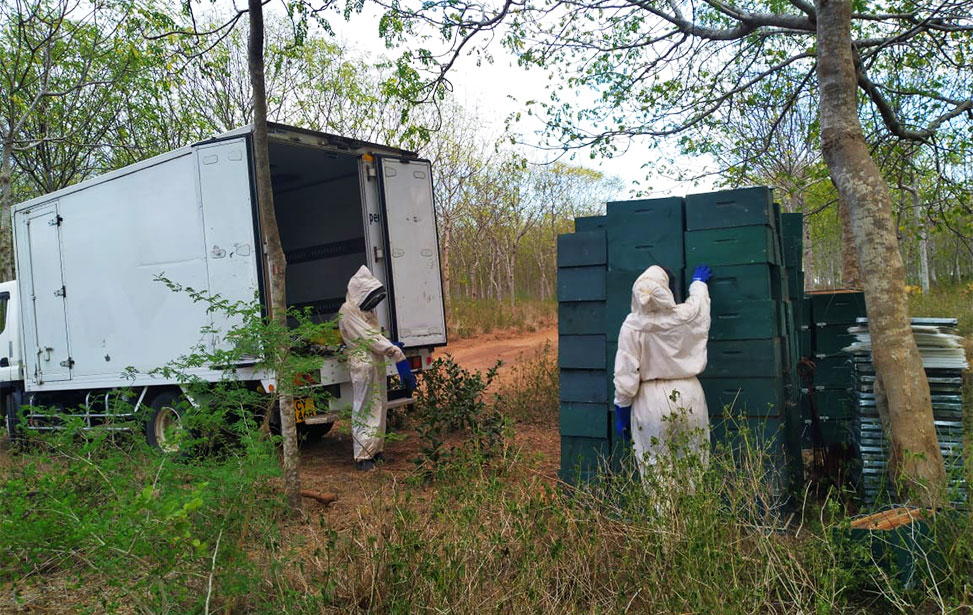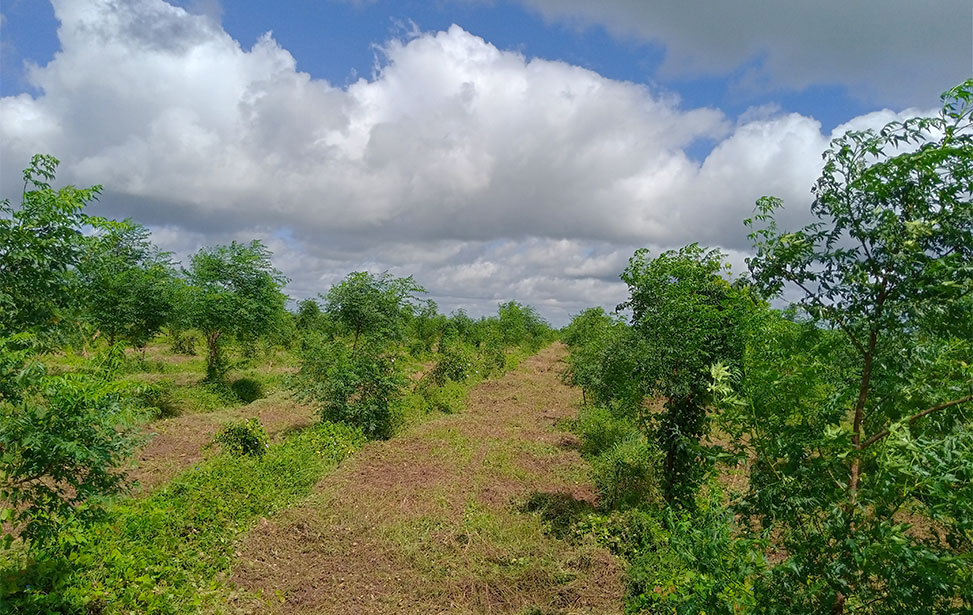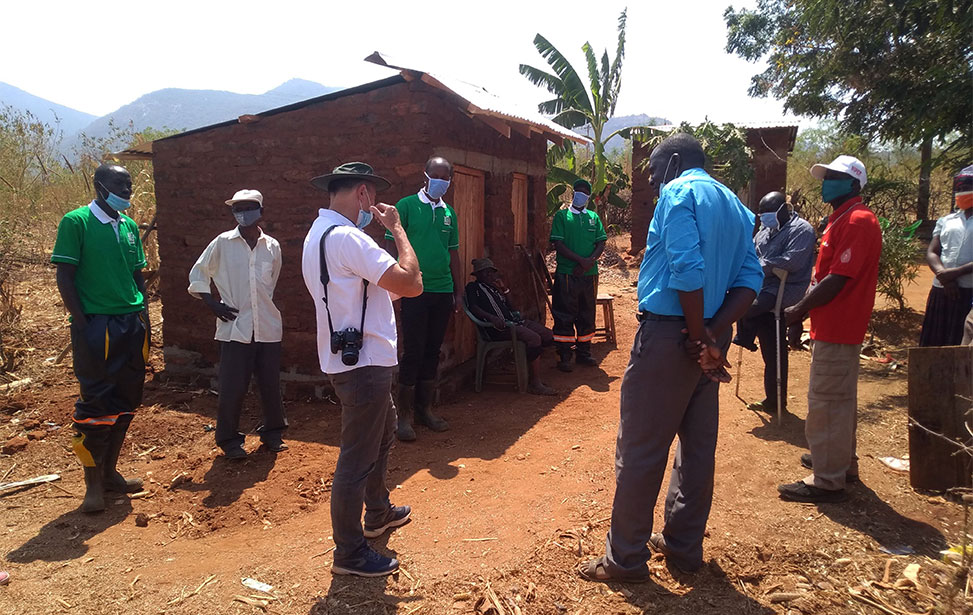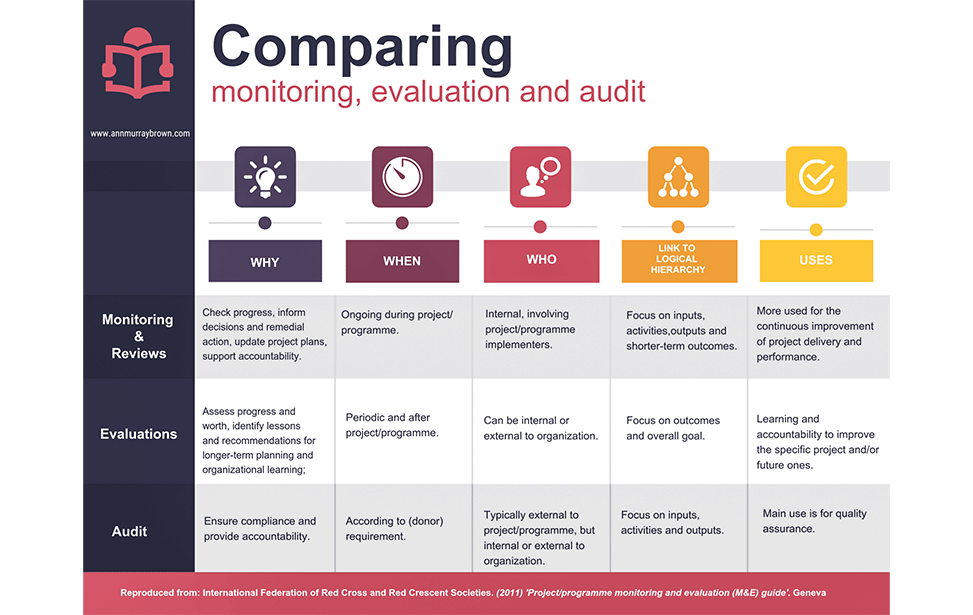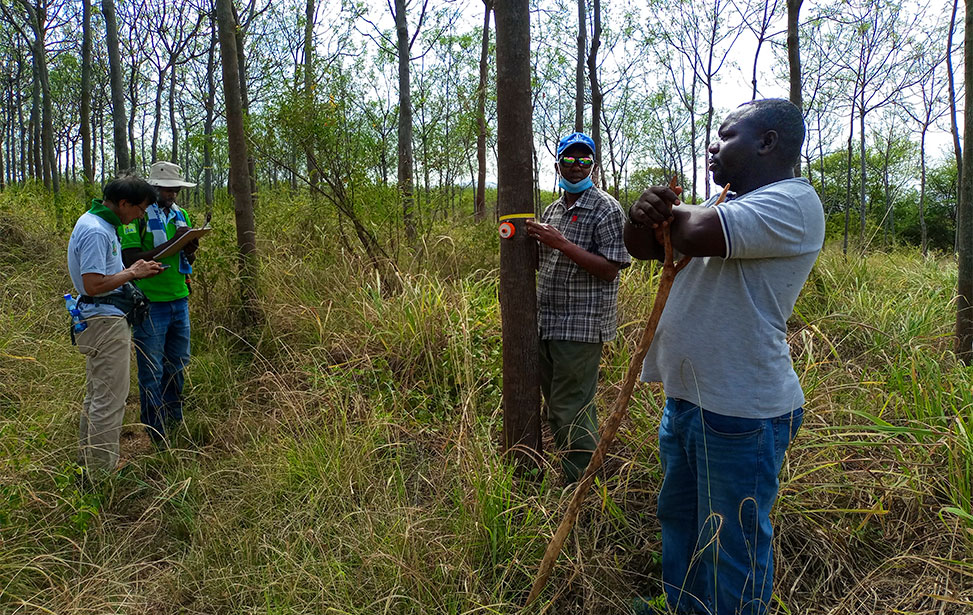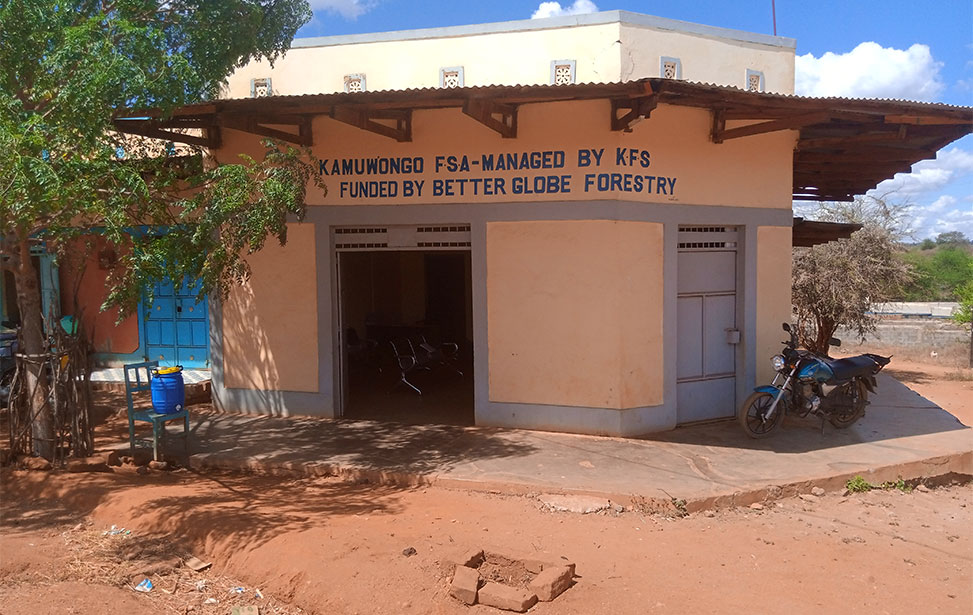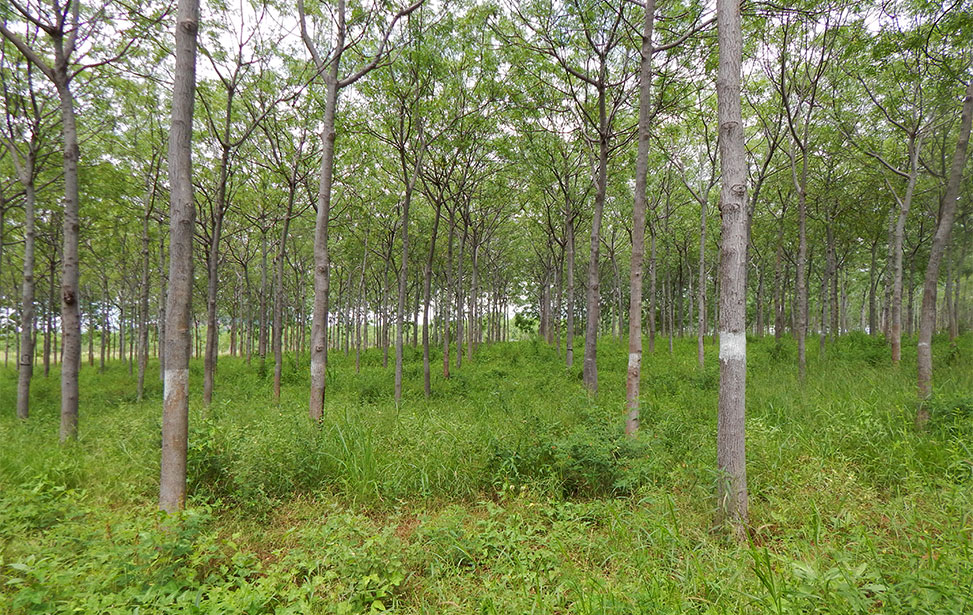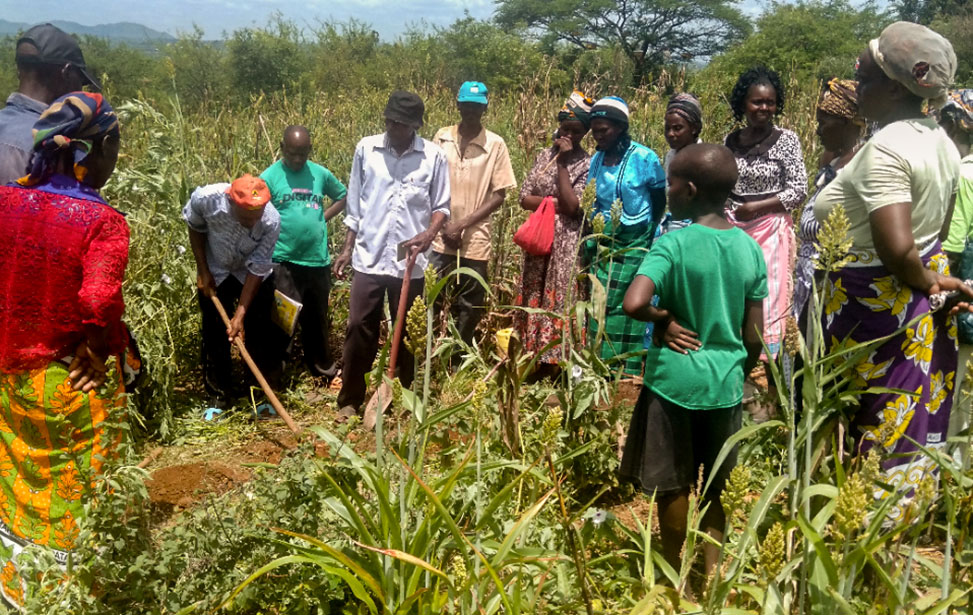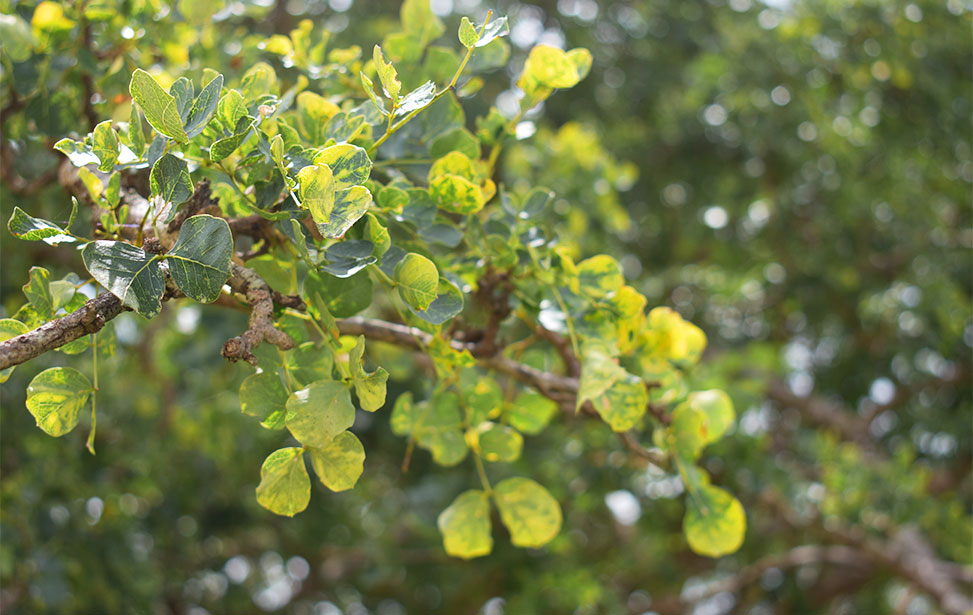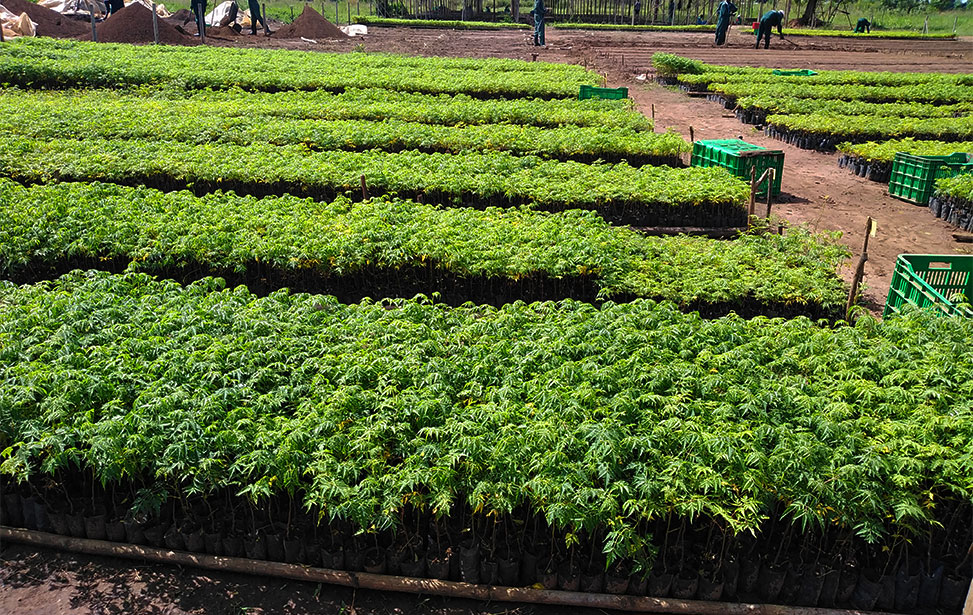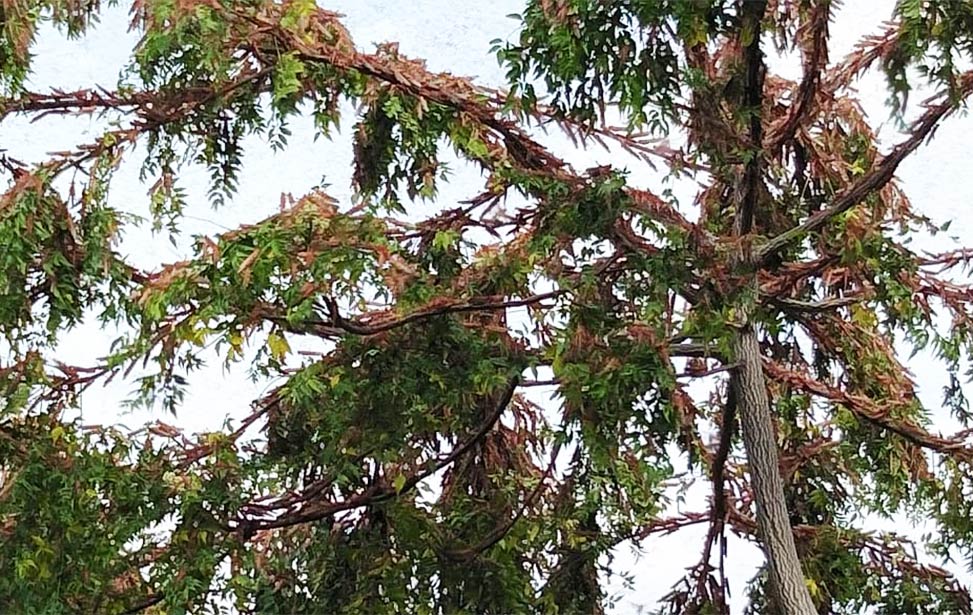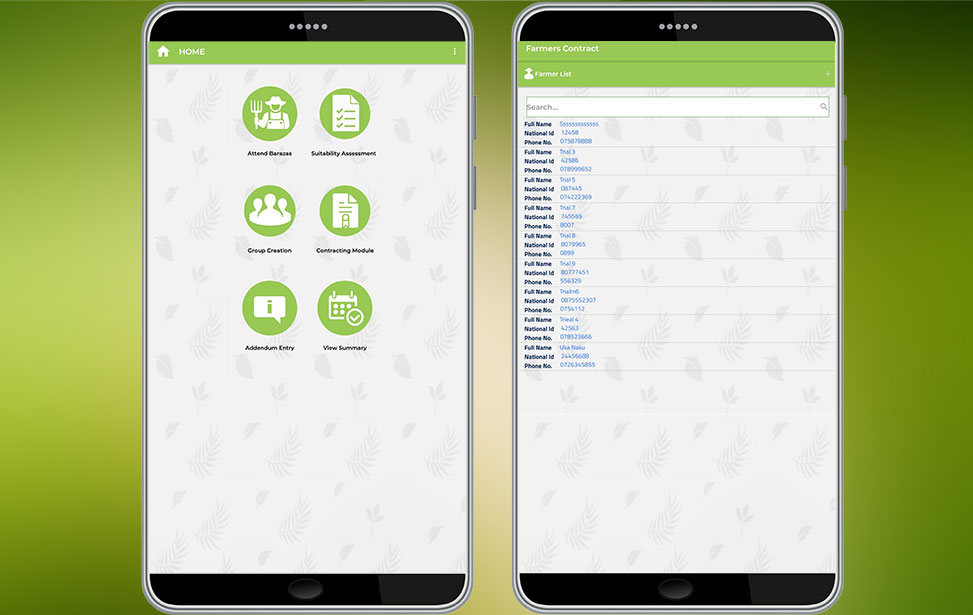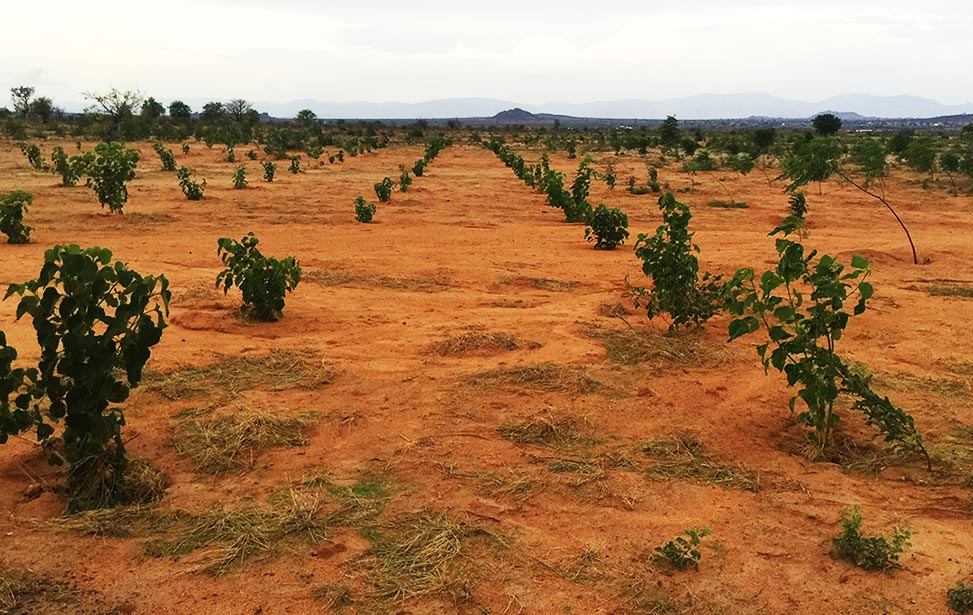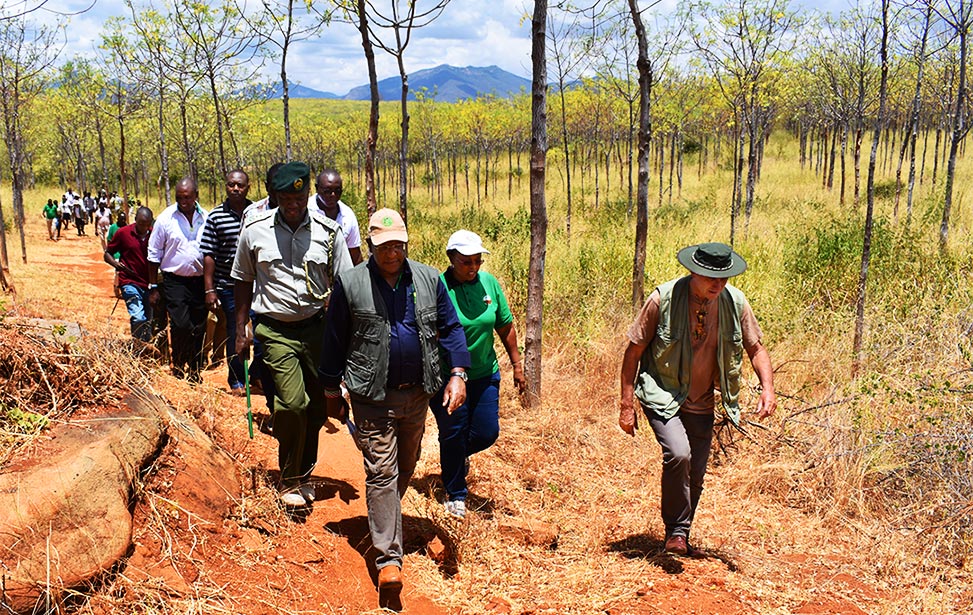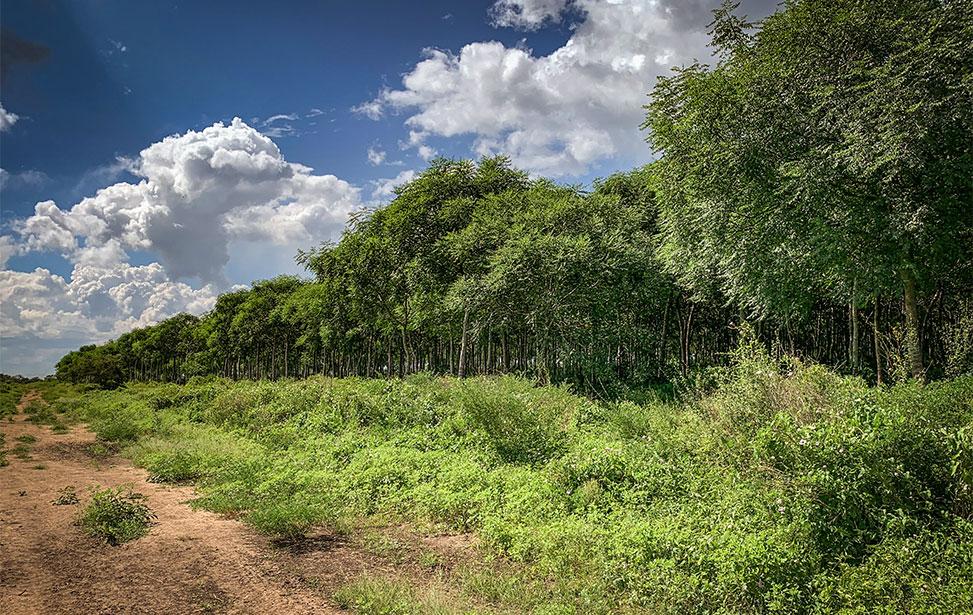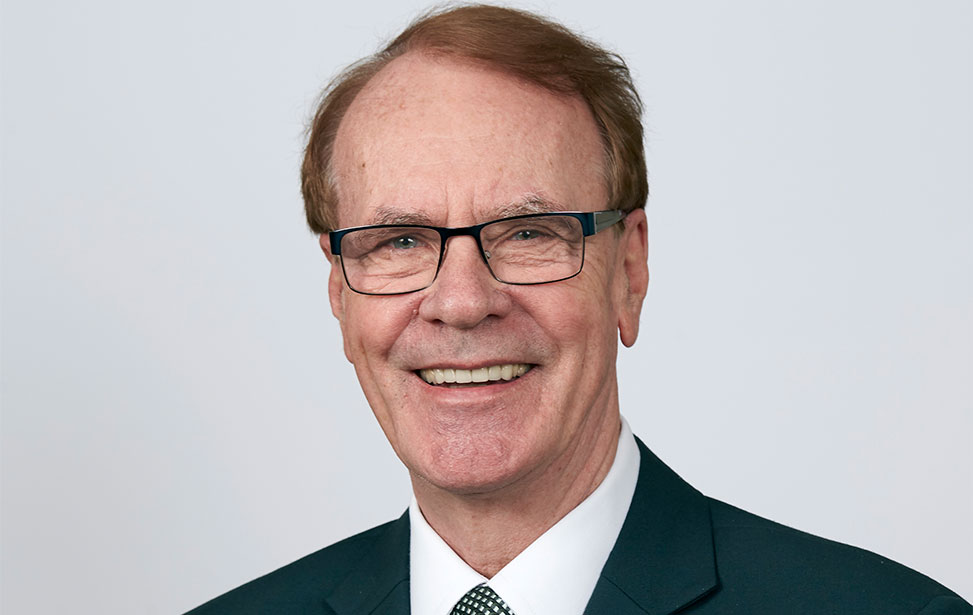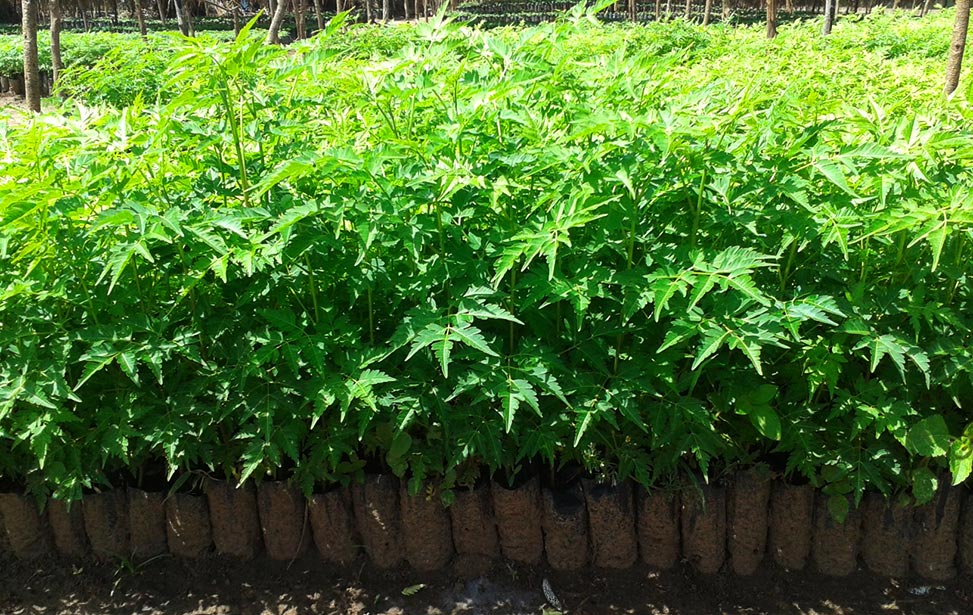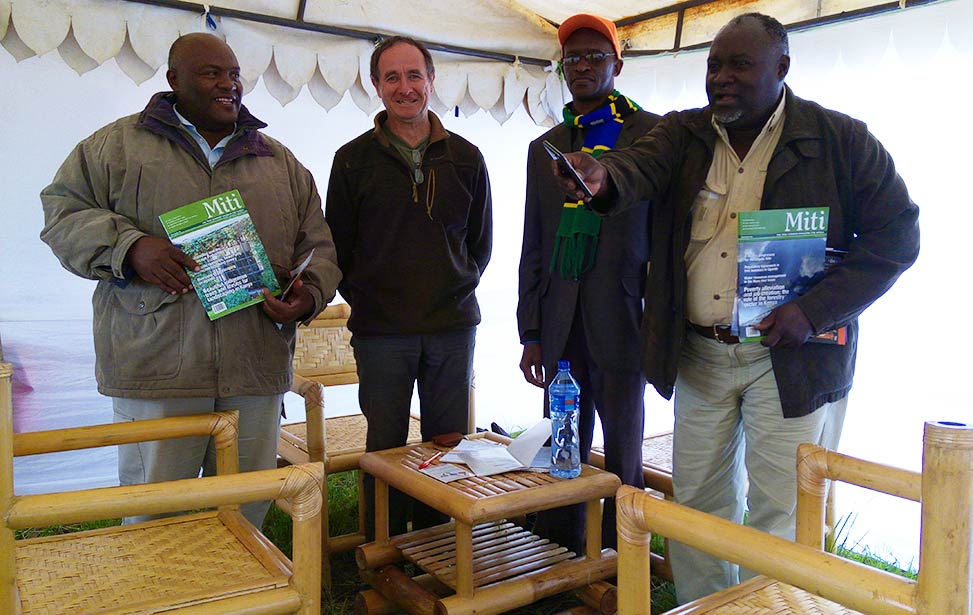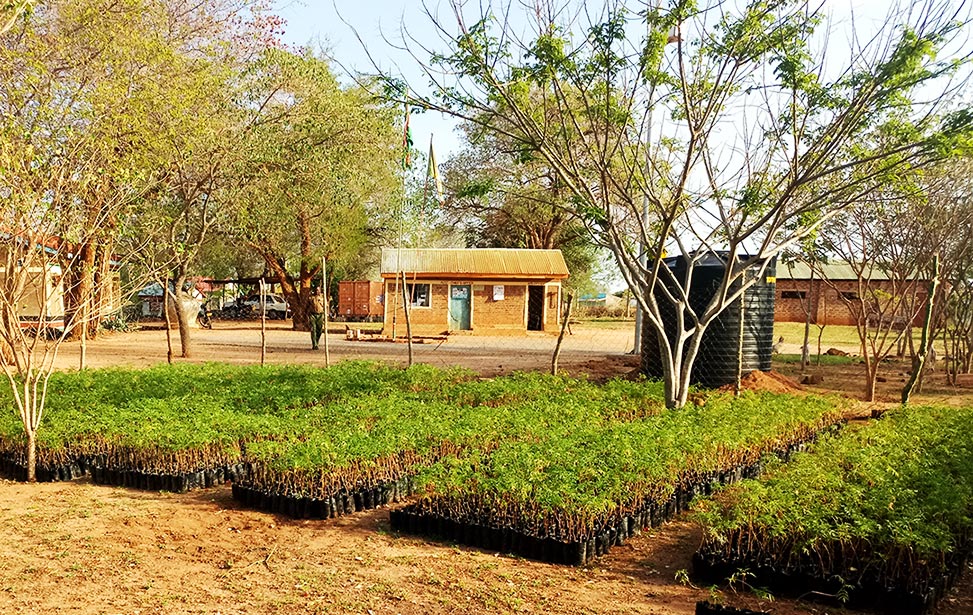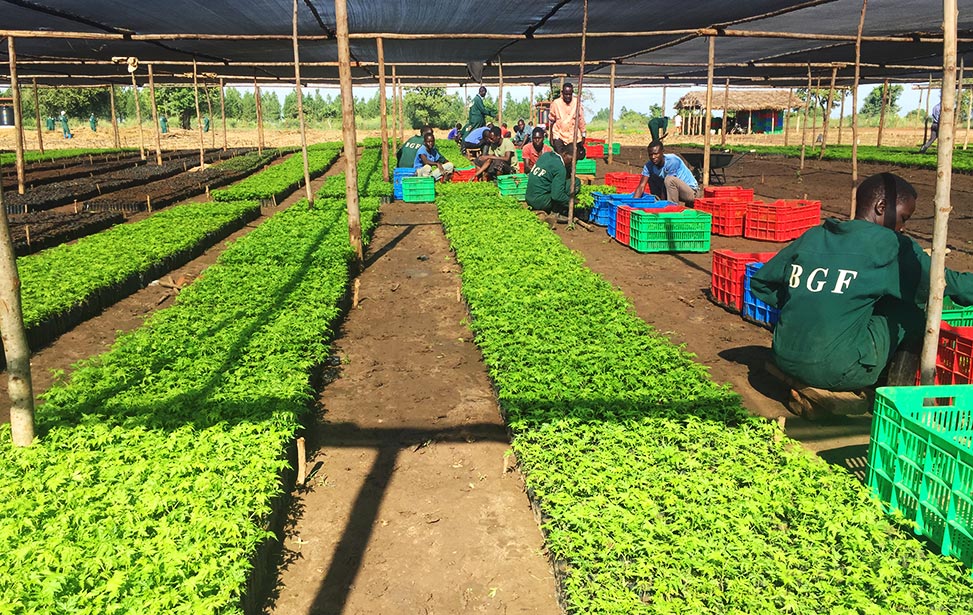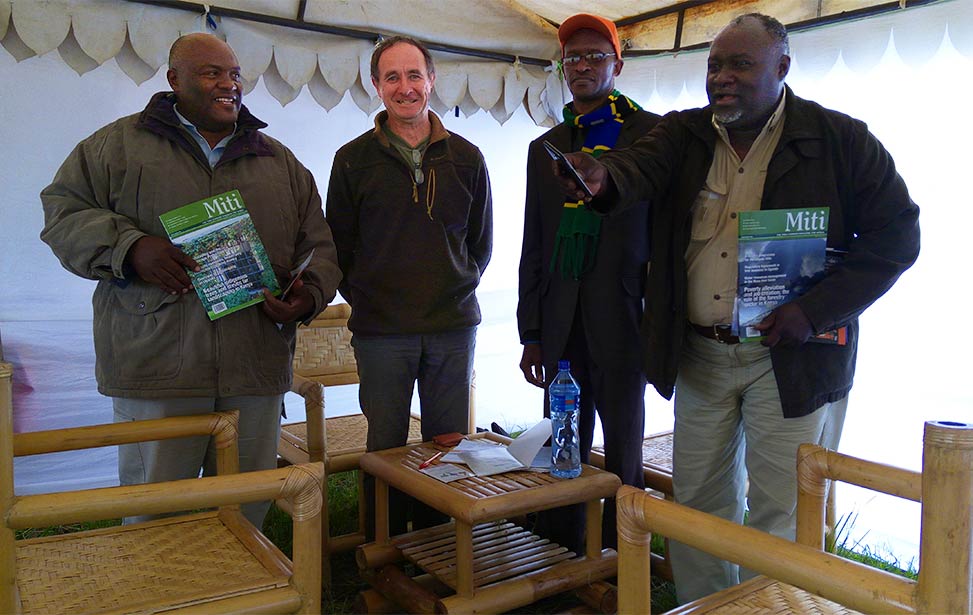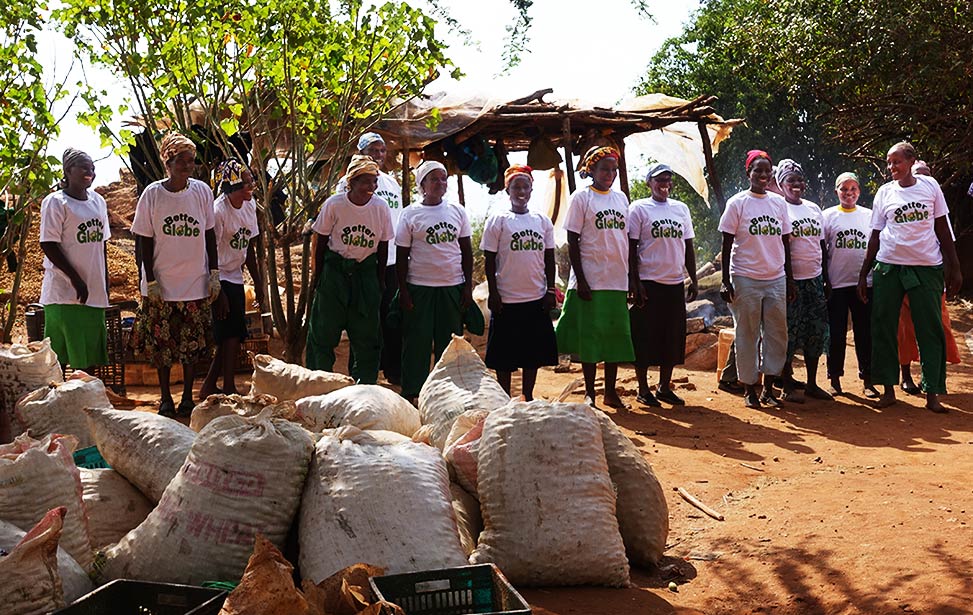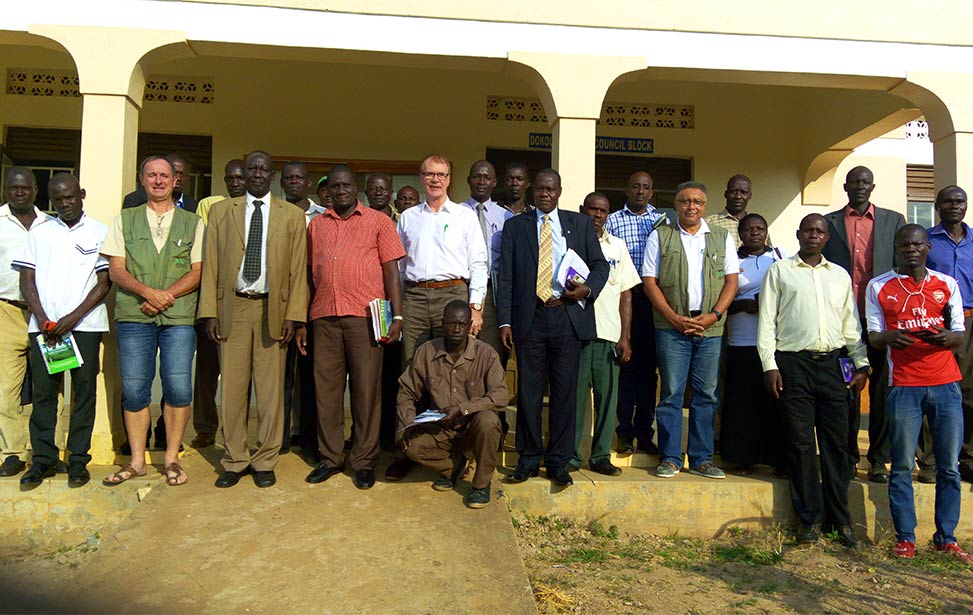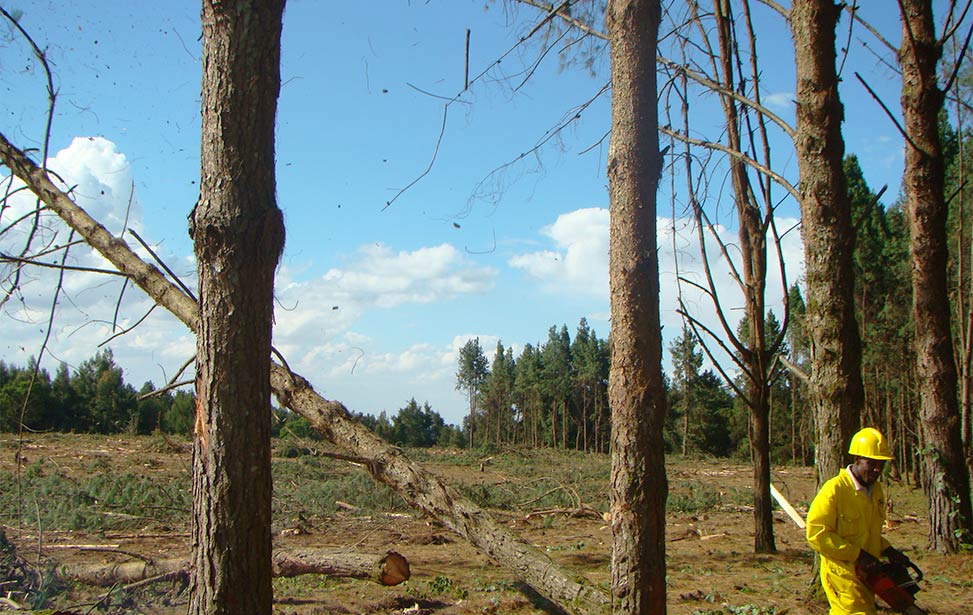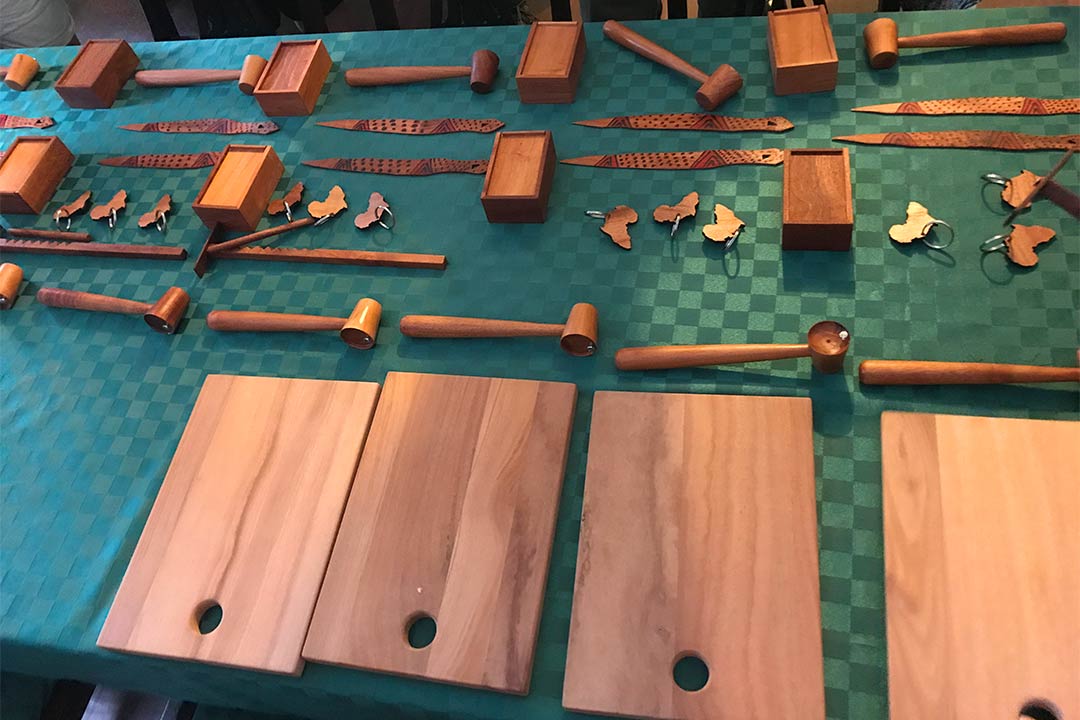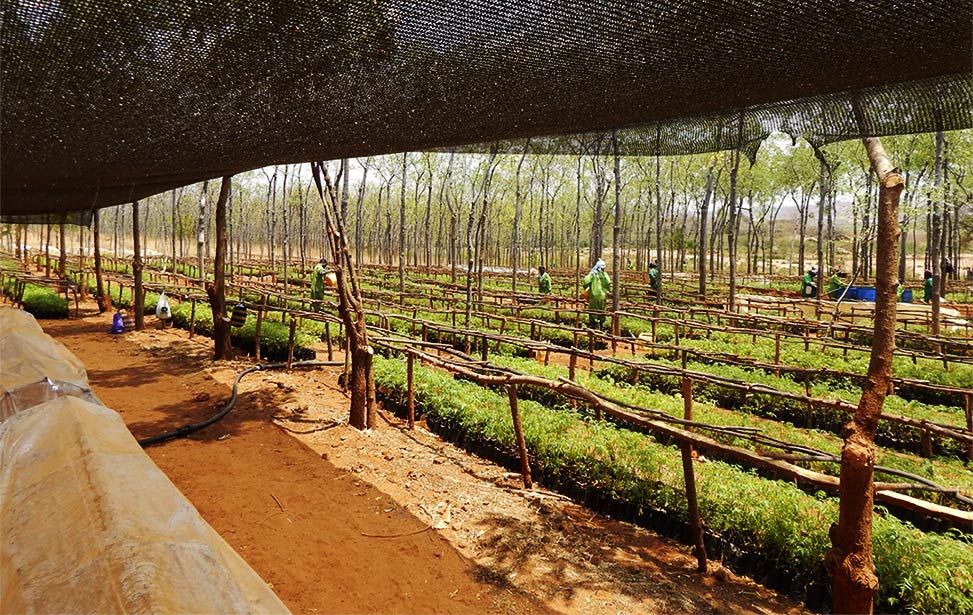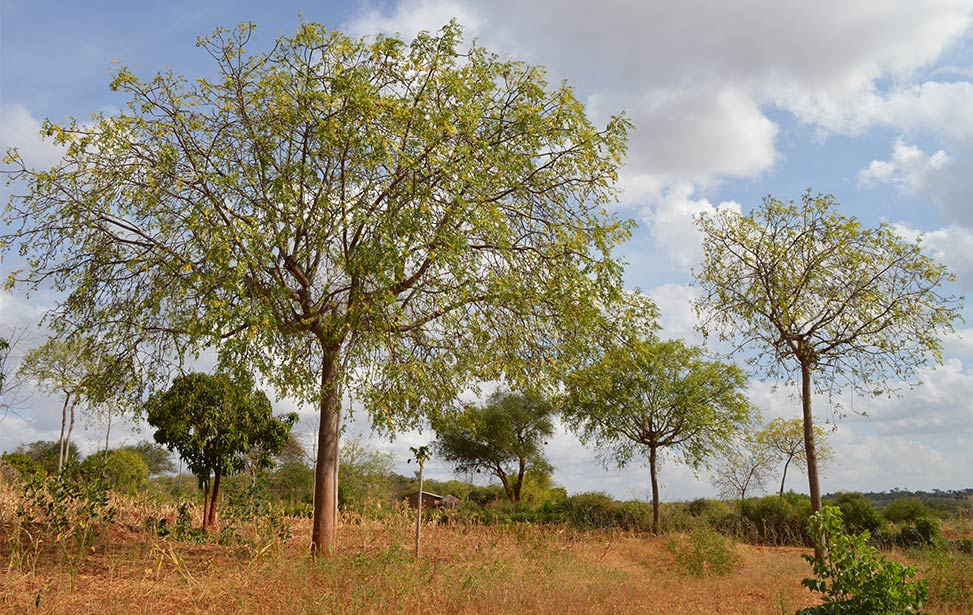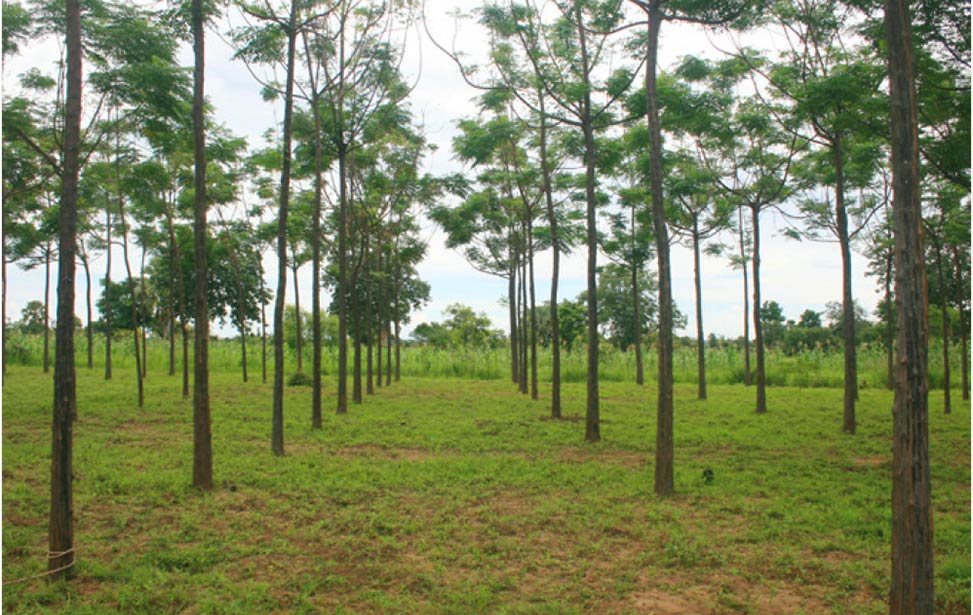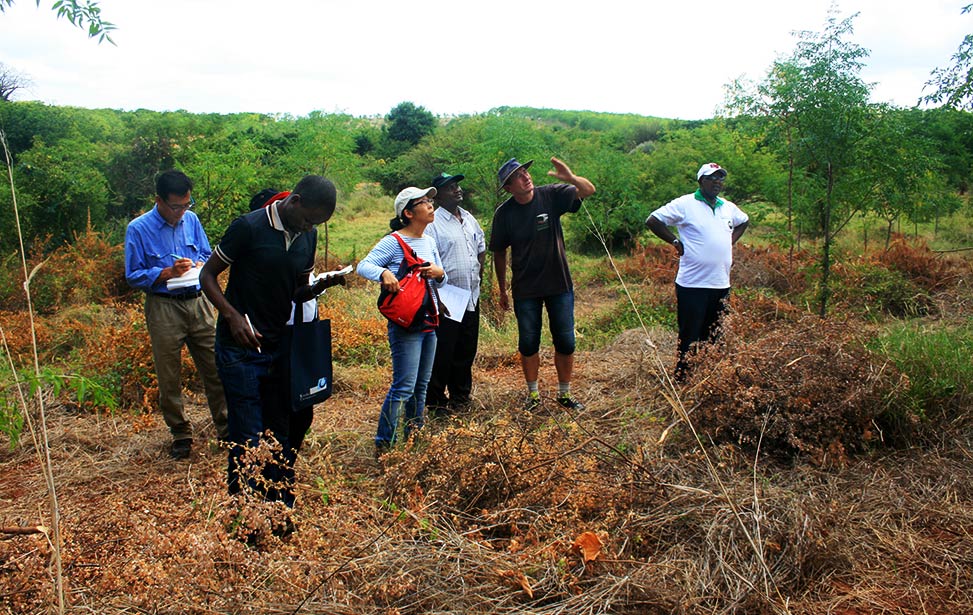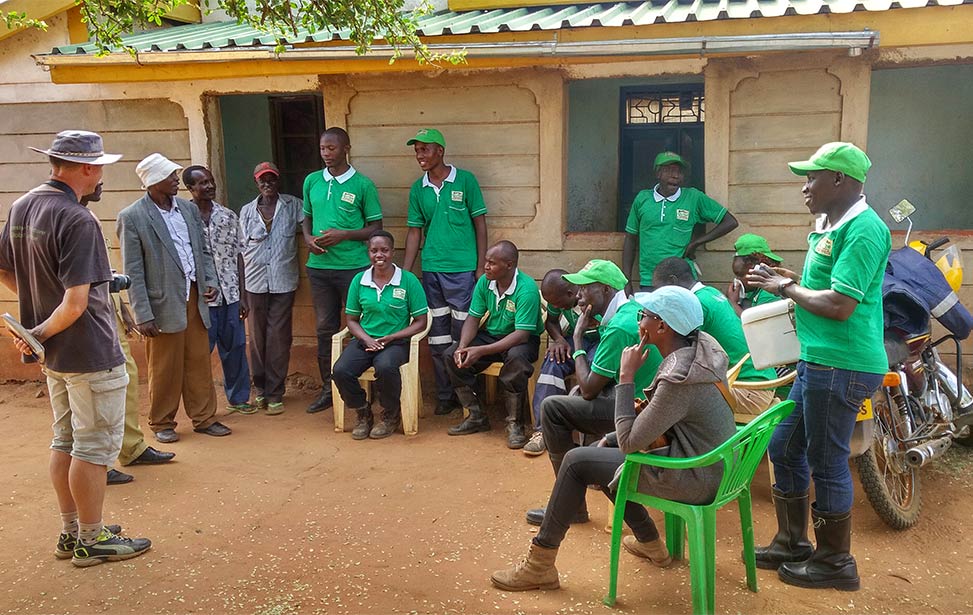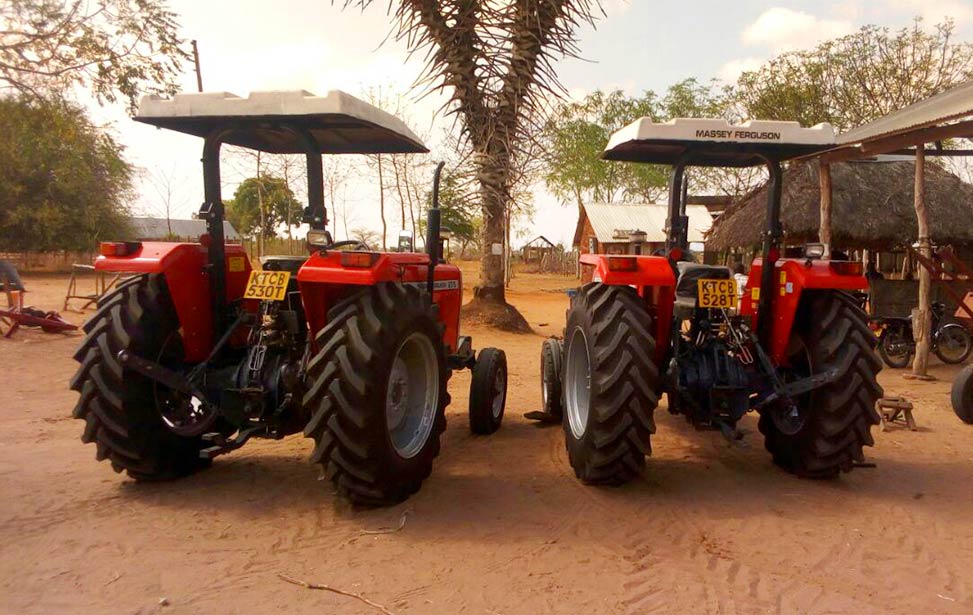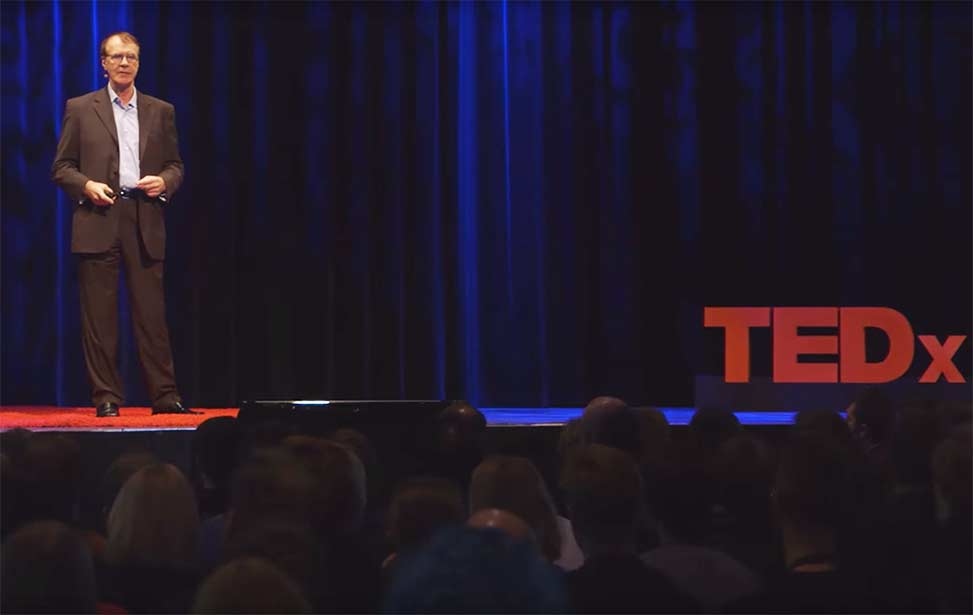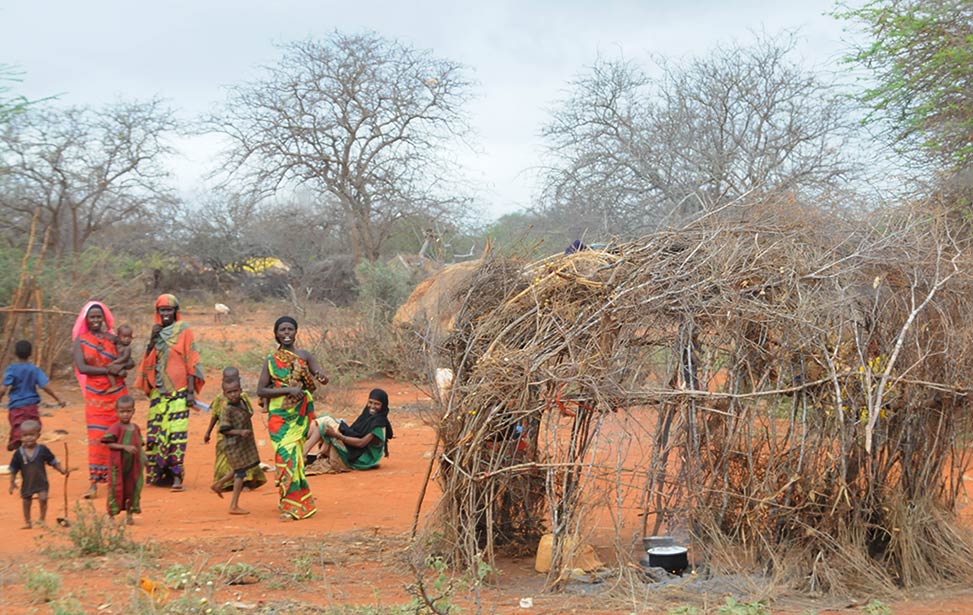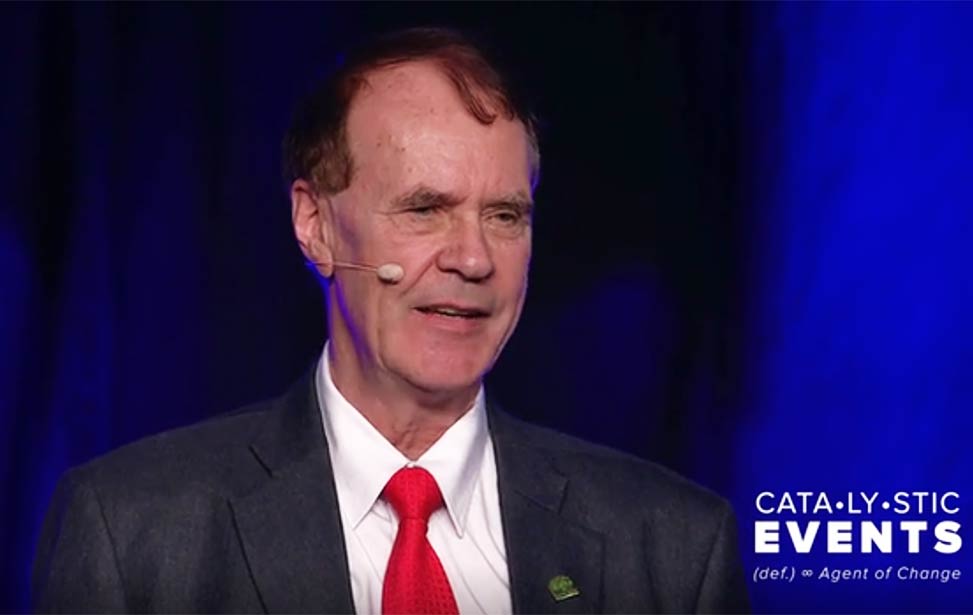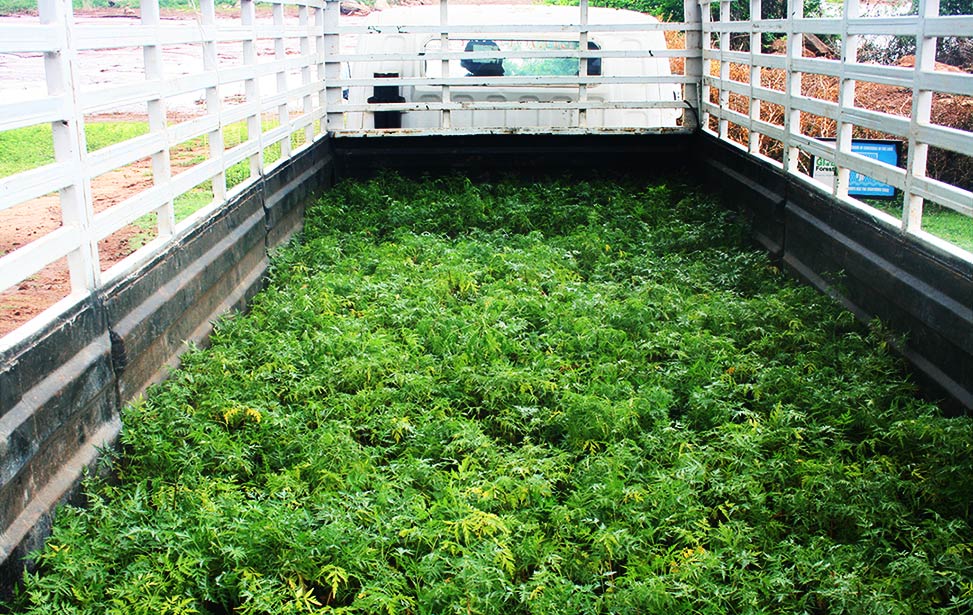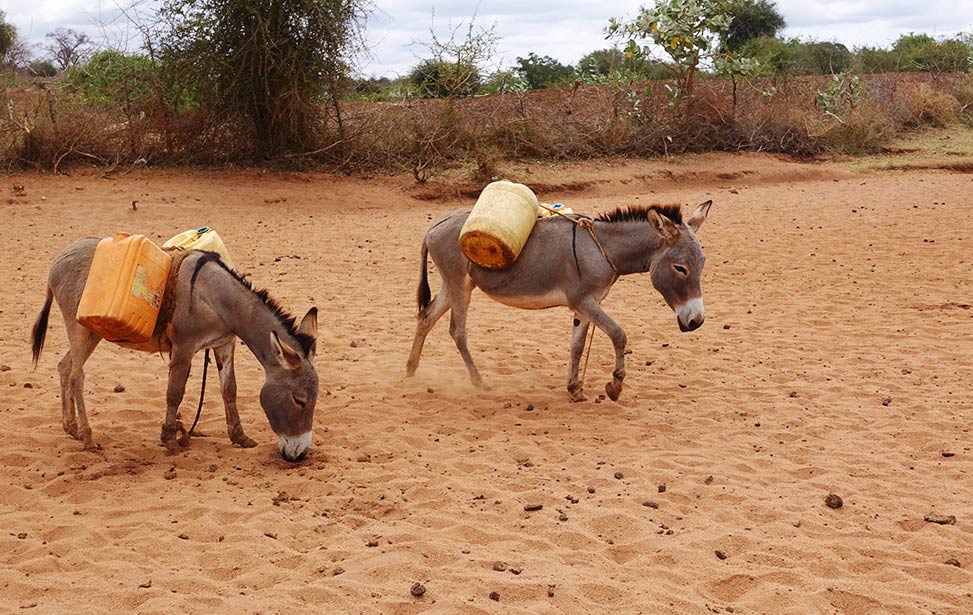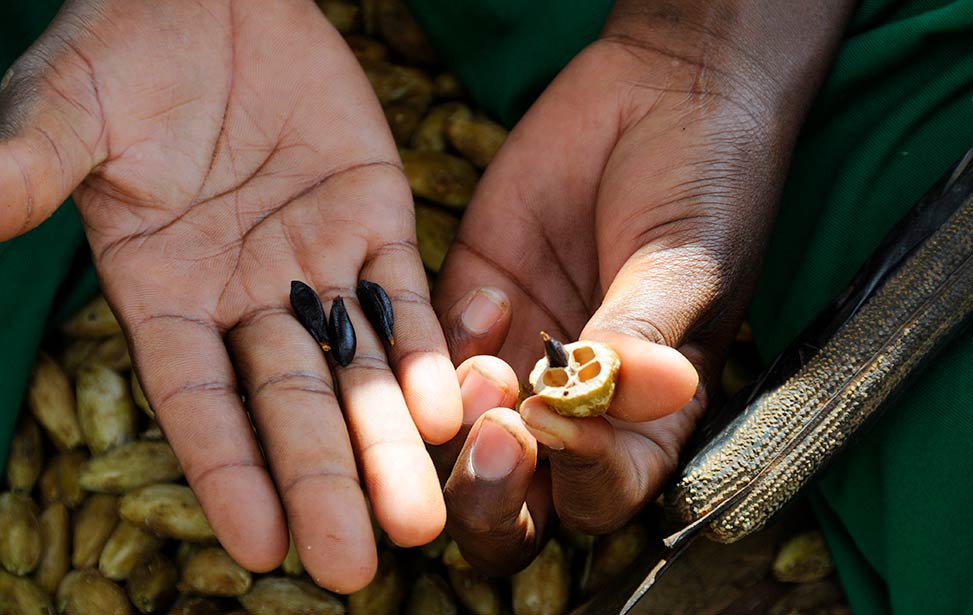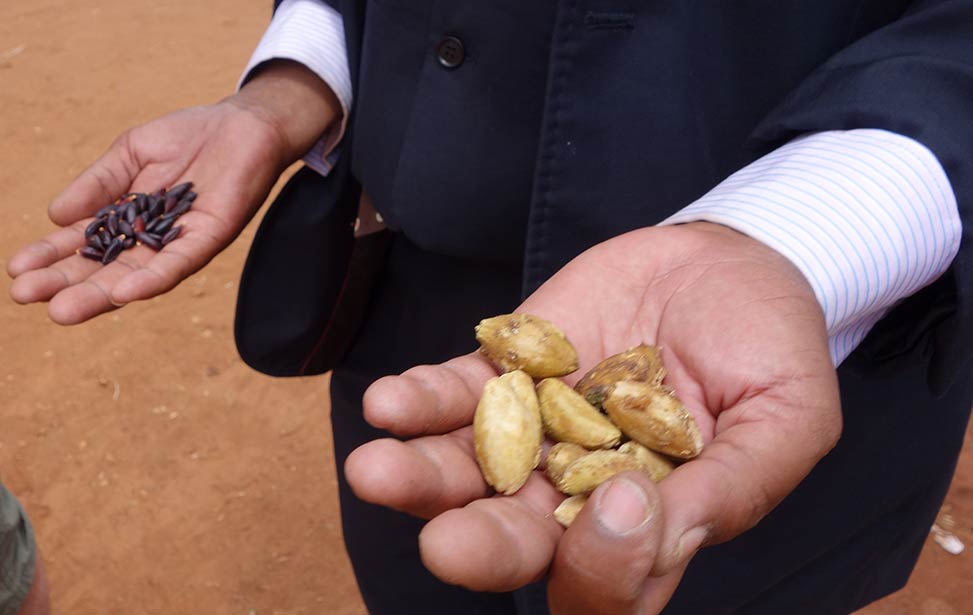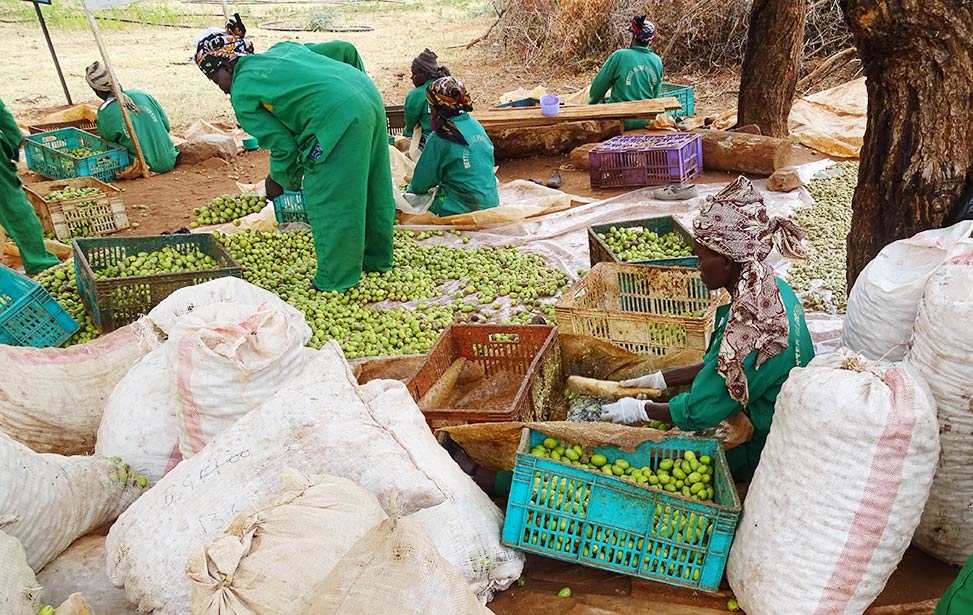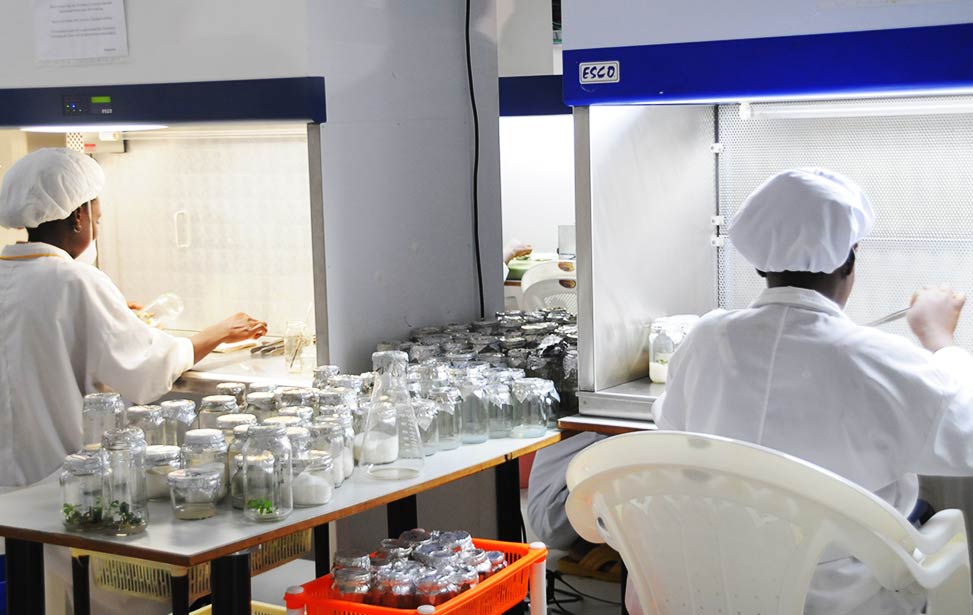- Jan Vandenabeele

Photo courtesy: Better Globe Forestry
In March of this year, Better Globe Forestry did a reconnaissance 2-day-trip to Karamoja, in which the districts of Nakapiripirit, Moroto, Napak and Abim were visited. The trip offered Better Globe Forestry an opportunity to scratch the surface, while deeper insight will be acquired through future visits.
Useful first impressions were gained, by studying the landscape and the vegetation, talking to the district authorities, National Forestry Authority (NFA) staff on the ground and the person in charge of natural resources of Moroto district.
The objective of the visit was to make first steps in the implementation of a large-scale afforestation program in the region, something that Better Globe Forestry has had in its longterm planning. This will be done through industrial blocks and contract growers. The following imperative questions needed to be answered: (a) is there suitable land available, (b) will the ecological conditions suit Better Globe Forestry’s flagship species mukau (Melia Volkensii), and (c) what is the attitude of the population and the authorities concerning such a program?
Better Globe Forestry has acquired experience in its different plantation program of mukau in Kenya, which can be applied to Karamoja. The mahogany timber produced by mukau, would be processed into products such as furniture that can be profitably marketed in Europe. This implies not only the growing on a sufficient scale of the species, but also the investment in processing industries such as a sawmill, kilns and a furniture workshop.
This means a serious long-term commitment intricately connected to funding possibilities, and marketing efforts to prepare for future sales. As such, a combined effort on several levels is required, both locally and in Scandinavia, where Better Globe Forestry originated from. Therein also lay the risks, like planting in dry areas and others, and this is balanced by the social-entrepreneurial drive of Better Globe Forestry's chairman, Rino Solberg, well established in Uganda for over 30 years with several ventures of which the NGO Child Africa is a very relevant one. The findings of this reconnaissance visit were positive, and as follows.
Suitable land
Karamoja is big with a lot of land gently rolling and sometimes flat, while rocky patches on slopes do occur, as well as some major mountains (Mt Kaddam, Napak, Moroto) and hill complexes (Abim). As the rainfall increases from East to West, away from the Kenyan border, the emphasis shifts from pastoral land (MAR Mean Annual Rainfall max 700 mm) towards agropastoral (MAR 500-800 mm) and agricultural (MAR 800-1200 mm).
The agropastoral zone is extensive, and tilling of fields was in progress, to prepare for sowing of crops like sorghum for the rains expected in April-May. This is the zone is that might be best suited to an afforestation program. It has relatively favorable rains and less occupancy than agricultural land, where food production is of higher priority. Inside this zone, clay soils have to be avoided altogether, with preference for red or grey soils. Extensive stretches of land like between Abim and Moroto, characterized through A. seyal and B. aegyptiaca, though situated in the agropastoral zone, are unsuitable for that matter.
Planting on slopes was ruled out from the beginning, to avoid rocks, stones, gullies and superficial soils, which make plantations heterogeneous and pose problems to mechanisation. This means that NFA's reserves on the mountains cannot be considered. In the end, three possibilities were tentatively approved, with the area around . Nabilatuk (Nakapiripirit district) being viewed as the best candidate.
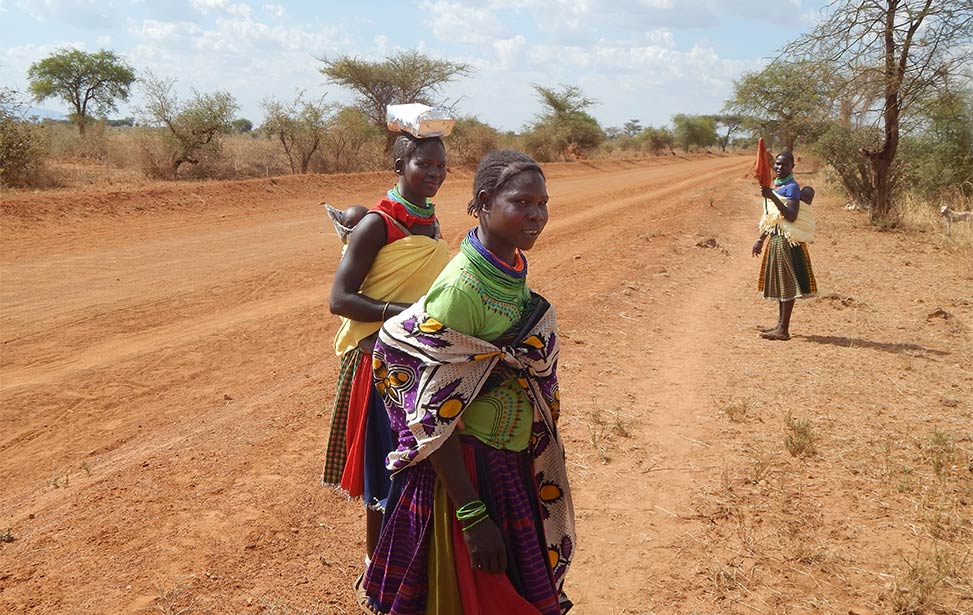
Women alongside the road in Nakapiripirit district.
Photo courtesy: Better Globe Forestry
Ecological conditions suitable for Melia volkensii
This mukau, closely related to M. azedarach (the giant lira), but different in several respects like having a far bigger drought-tolerance, can do with a total annual rainfall of 350-1000mm, and still prosper. In Kenya, where it grows in dry woodland and Commiphora-Acacia bushland and grass savannahs, it is mostly found on relatively light and sandy red soils, though it can occasionally be seen growing on heavier soils.
In its natural range, the species is planted by farmers in their fields, for agroforestry purposes. It is sensitive to water logging, and a few days of flooding suffice to kill a seedling or a young tree. Nevertheless, the species needs sufficient rainfall during its first months of planting to get successfully established, and eventual lack of rain will have to be compensated through watering. In other words, a "good" and steady rainy season will see mukau through this sensitive period, and absence of rain, even during a couple weeks after planting, has to be made up for. Mukau is the most drought-tolerant mahogany in the world, but even this has its limits. The leaves are quite tender, and are shed during the dry season as a drought-coping mechanism.
The quite constant hot winds blowing from Turkana towards the west might eventually affect the leaves. A trial plantation will have to be established to give a decisive answer. The ecological environment shows quite some similarities with its natural home.
Mukau will never become an invasive species, due to the heavy nature of its fruits, which are not easily dispersed. Goats and sheep also like the seeds, as well as its leaves and bark. Indeed, the trees actually need protection against goats that love stripping the bark from the stem of young seedlings, sometimes leaving it completely bare and dying. On the positive side, the tree can be pruned or branches lopped off, and this can be given to livestock as dry season fodder supplement, just the same way it is locally done with B. aegyptiaca (the desert date).
Support of population and authorities
The authorities of the four districts mentioned were informed about Better Globe Forestry's intentions and all were in favor of an afforestation program. As local leaders and opinion makers, their views count. On the ground, however, the locals will have to balance the loss of grazing or agropastoral land, with the benefits of regular wages and salaries of the workforce required for the program. A planting plan of 5,000 to 20,000 ha will create some hundreds to 1,500-2,000 direct jobs, for both low-skilled and higher skilled labor. This has a multiplication effect through indirect job creation, as in the service and transport sectors. The authorities will have to organize for meetings where Better Globe Forestry's proposal can be communicated and discussed with the concerned population, once Better Globe Forestry itself clearly knows what it wants.

Borassus aethiopum (African fan palm) parklands on the boundary between Abim and Napak districts, badly treated by bushfires used to clear land for agriculture.
Photo courtesy: Better Globe Forestry
Water
This is definitely a problem, although Mean Annual Rainfall figures paint an optimistic picture. It is noted that rainfall has become quite unpredictable with sometimes a succession of several almost rainless years, as we were told in Moroto by the District Chairperson. It is standard practice in Better Globe Forestry's plantations in Kenya to water the seedlings after establishment, given the nature of the land where we are planting. This requires substantial amounts of water, ranging between 75 and 125 m3 of water/ha for a watering period of 6 to 10 months after planting. Despite experimenting with other methods like the use of hydrogel and two types of "growboxes", no reliable alternative has been found so far.
The nursery will also need a constant and reliable supply of water, at some 3.6 m3 per thousand seedlings produced. Potential sources of water include (i) natural springs like those occurring at the footslopes of the mountains (e.g. Mt Kaddam), (ii) shallow wells fed by groundwater layers alongside seasonal sand rivers (e.g. Lalachat in Nakapiripirit) eventually enhanced by a subsurface dam for bigger and more reliable supply, and (iii) rainwater harvesting on sloping surface areas and mass storage in big plastic lined basins. A combination of all methods might be required.
For Better Globe Forestry, this is the only way, there is no turning back. So we will soon return to Karamoja to take up from where we left. In view of what we saw in March, Karamoja will do.
- Source: Better Globe Forestry
- Author: Jan Vandenabeele

